Once again. The Chinese Well station
was not at Sirius:
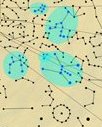
Instead it was where Castor had placed the
heel of his left foot - i.e. not on terra firma:

... [Φ] is
the 21st letter of the Greek alphabet ... Its origin is
uncertain but it may be that phi originated as the letter qoppa
... In traditional Greek numerals, phi has a value of 500 or
500000 ... Isaac Taylor, History
of the Alphabet: Semitic Alphabets, Part 1, 2003: 'The old
explanation, which has again been revived by HalÚvy, is that it
denotes an 'ape,' the character Q being taken to
represent an ape with its tail hanging down. It may also be
referred to a Talmudic root which would signify an 'aperture' of
some kind, as the 'eye of a needle,' ...
|
20 |
Turtle Head |
λ Orionis
(Heka) |
Monkey |
(83.2) |
June 12
(163) |
|
21 |
Three Stars |
ζ Orionis
(Alnitak) |
Gibbon |
(84.7) |
June 13
(164) |
|
June
solstice |
|
22 |
Well |
μ Gemini
(Tejat Posterior) |
Tapir |
(95.4) |
June 24
(175) |
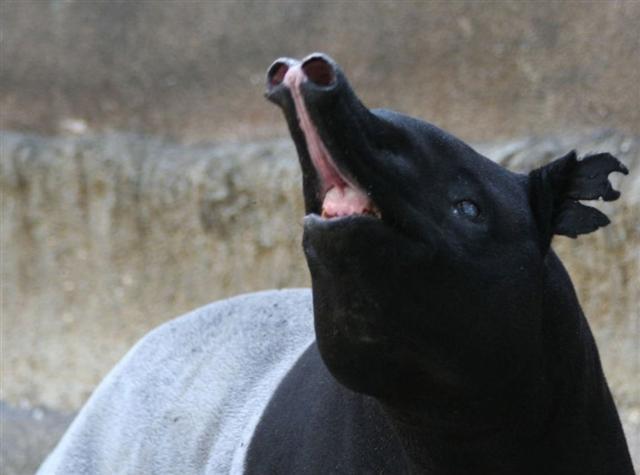
...
Tejat Prior is from Al
Tahāyī, an anatomical term of the Arabs by which it was known in early days;
a name also applied to stars in the head of Orion ...
|
*APRIL 13 |
4-14 |
15 (*25 + ╝ = *26) |
16 (*27 + 80 = 107) |
17 (107 = 80 + 27) |
 |
 |
 |
 |
 |
|
Ga1-27 |
Ga1-28 |
Ga1-29 |
Ga1-30 |
Ga2-1 |
|
6h (91.3)
ν Orionis (91.4), θ
Columbae (91.5), π Columbae (91.6) |
ξ Orionis (92.5) |
Al Han'ah-4 /
Maru-sha-pu-u-mash-mashu-7
(Front of the Mouth of the Twins)
TEJAT PRIOR = η Gemini
(93.4), γ Monocerotis
(93.5), κ Aurigae (93.6), κ Columbae (93.8) |
FURUD (Apes) = ζ Canis
Majoris (94.9) |
Well-22 (Tapir) /
Arkū-sha-pu-u-mash-mashu-8
(Back of the Mouth of the Twins)
δ Columbae (95.2),
TEJAT POSTERIOR = μ
Gemini,
MIRZAM (Announcer)
= β Canis Majoris
(95.4), CANOPUS
(Pilot) = α Carinae
(95.6), ε Monocerotis (95.7), ψ1 Aurigae (95.9) |
|
20 (171 = 9 * 19) |
SOLSTICE |
June 22 |
23 |
ST JOHN'S DAY |
|
ZHŌNGSHĀN = ο
Herculis (274.0), π Pavonis (274.6) |
ι Pavonis (275.1),
POLIS = μ Sagittarii (275.9)
MENKAR (α Ceti)
|
η Sagittarii (276.9) |
Purva Ashadha-20 |
|
KAUS MEDIUS = δ Sagittarii, κ Lyrae
(277.5), TUNG HAE (Heavenly Eastern Sea) =
η Serpentis (277.7), SHAOU PIH (Minor Minister)
= φ Draconis (277.8), KWEI SHE = χ Draconis
(277.9) |
φ Oct.
(278.1), KAUS AUSTRALIS = ε Sagittarii
(278.3), ξ Pavonis (278.4),
AL ATHFAR (Talons of
the Falling Eagle)
= μ Lyrae (278.6) |
|
December 20 (354) |
SOLSTICE |
22 |
23 |
CHRISTMAS EVE |
|
*OCTOBER 13 |
14 |
15 (*208 + ╝ = *209) |
16 (*210 + 80 = 290) |
17 (290 = 80 + 210) |

... Furud is either from
Al Furud, the Bright Single One, or, perhaps by a transcriber's error, from
Al Kurūd, the Apes, referring to the surrounding small stars with
some of those of Columba; Ideler thought the latter derivation more probable
...
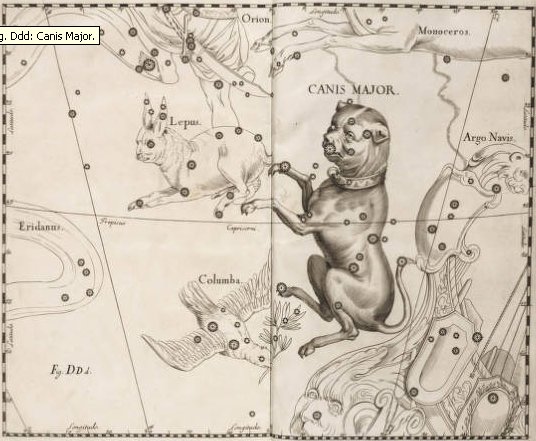
... Zeta (uppercase
Ζ,
lowercase ζ;
Greek: ζήτα
... is the sixth letter of the Greek alphabet. In the system of Greek numerals,
it has a value of 7. It was derived from the Phoenician letter Zayin.
Letters that arose from zeta include the Roman Z and Cyrillic
З
...
Zayin
(also spelled Zain or Zayn or simply Zay) is the seventh
letter of many Semitic abjads ... It represents the sound [z].
The Phoenician letter appears to be named after a sword or other weapon. (In
Biblical Hebrew, 'Zayin' means sword, and the verb 'Lezayen'
means to arm. In modern Hebrew, 'zayin' means penis and 'lezayen'
is a vulgar term which generally means to perform sexual intercourse and is used
in a similar fashion to the English word fuck, although the older meaning
survives in 'maavak mezuyan' (armed struggle) and 'beton
mezuyan' (armed, i.e., reinforced concrete). The Proto-Sinaitic glyph
according to Brian Colless may have been called ziqq, based on a
hieroglyph depicting a 'manacle' ...
|
Topknot |
η Andromedae |
11.4 |
April
1 (91) |
| 1 |
Al
Sharatain |
Pair of
Signs |
β Arietis (Sheratan),
γ (Mesarthim) |
27.4 |
April 17
(107) |
| Musca
Borealis |
35 (Head of the Fly), 39
(Kaffaljidhma), and
41 Arietis (Bharani) |
41.4 |
May 1
(121) |
| 2 |
Al
Dabarān |
Follower |
α Tauri (Aldebaran), θ╣,
θ▓┤, γ (Hyadum I),
δ (Hyadum II), ε (Ain) |
63.4 |
May 23
(143) |
| 3 |
Al
Hak'ah |
White
Spot |
λ Orionis (Heka),
φ╣, φ▓ |
83.4 |
June 12
(163) |
| 4 |
Al
Han'ah |
Brand |
γ Gemini (Alhena), μ (Tejat
Posterior), ν, η
(Tejat Prior), ξ
(Alzirr) |
93.4 |
June 22
(173) |
| 5 |
Al
Dhirā' |
Forearm |
α Gemini (Castor),
β (Pollux) |
113.4 |
July
12 (193) |
|
Unicorn |
α Monocerotis |
115.4 |
July
14 (195) |
| 6 |
Al
Nathrah |
Gap |
ε Cancri (Beehive) |
130.4 |
July 29
(210) |
| 7 |
Al
Tarf |
End |
ξ Cancri,
λ Leonis (Alterf) |
143.4 |
Aug 11
(223) |
| 8 |
Al
Jabhah |
Forehead |
η Leonis (Al Jabhah),
α (Regulus), ζ (Adhafera), γ
(Algieba) |
152.4 |
Aug 20
(232) |
| 9 |
Al
Zubrah |
Mane |
δ Leonis (Zosma),
θ (Coxa) |
169.4 |
Sept 6
(249) |
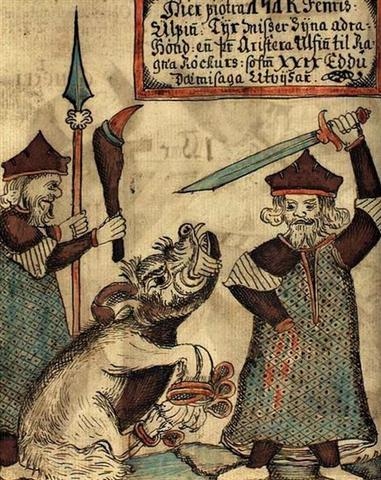 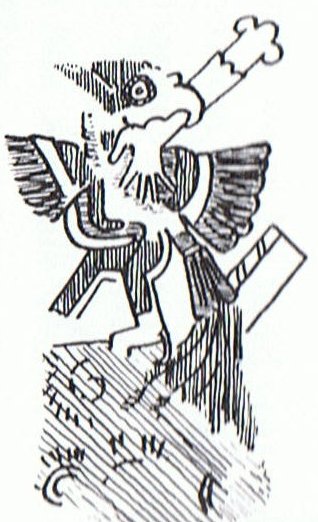 
When the Sun was at μ Gemini (Tejat Posterior) then the 20th Hindu station (the
Winnowing Basket) was at the Full Moon. Here Hevelius evidently alluded to the
cut off forearm of Mars (Tyr as in Tuesday). But the left forearm of the Horse
Man was intact, between the Winnowing Basket and the Cradle:

|
SAGITTARIUS: |
|
20 |
Purva Ashadha |
δ and
ε Sagittarii |
Elephant tusk,
fan, winnowing
basket |
|
first of the ashādhā (the invincible one, the name of
a constellation) |
Kaus |
|
LYRA: |
|
22 |
Abhijit |
α, ε,
and ζ Lyrae |
- |
|
victorious |
Vega |
|
SAGITTARIUS: |
|
21 |
Uttara Ashadha
|
ζ and
σ Sagittarii |
Elephant tusk,
small bed |
|
second of
the ashādhā |
Nunki |
... As has already been
mentioned, the Delphians worshipped Dionysus once a year as the new-born
child, Liknites, 'the Child in the Harvest Basket', which was a
shovel-shaped basket of rush and osier used as a harvest basket, a cradle, a
manger, and a winnowing-fan for tossing the grain up into the air against
the wind, to separate it from the chaff
...
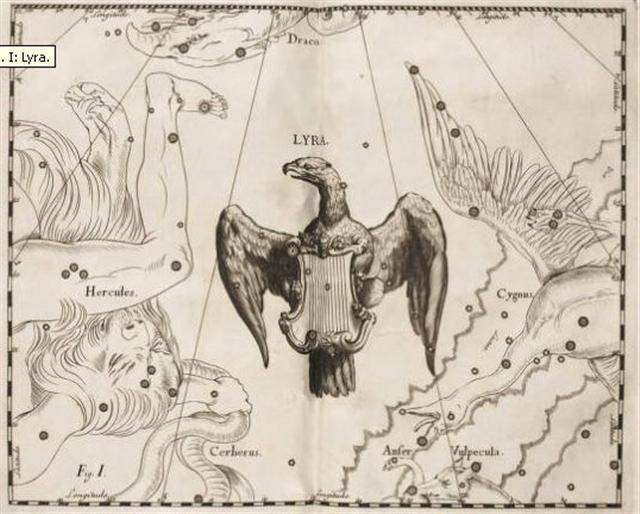
... Mons Maenalus, at the
feet of Bo÷tes, was formed by Hevelius, and published in his Firmamentum
Sobiescianum; this title coinciding with those of neighboring stellar
groups bearing Arcadian names. It is sometimes, although incorrectly, given
as Mons Menelaus, - perhaps, as Smyth suggested, after the
Alexandrian astronomer referred to by Ptolemy and Plutarch. The Germans know
it as the Berg Menalus; and the Italians as Menalo.
Landseer has a striking
representation of the Husbandsman, as he styles Bo÷tes, with sickle and
staff, standing on this constellation figure. A possible explanation of its
origin may be found in what Hewitt writes in his Essays on the Ruling
Races of Prehistoric Times:
The Sun-god thence climbed up the
mother-mountain of the Kushika race as the constellation Hercules, who is
depicted in the old traditional pictorial astronomy as climbing painfully up
the hill to reach the constellation of the Tortoise, now called Lyra, and
thus attain the polar star Vega, which was the polar star from 10000 to 8000
B.C.
May not this modern companion
constellation, Mons Maenalus, be from a recollection of this early Hindu
conception of our Hercules transferred to the adjacent Bootes?
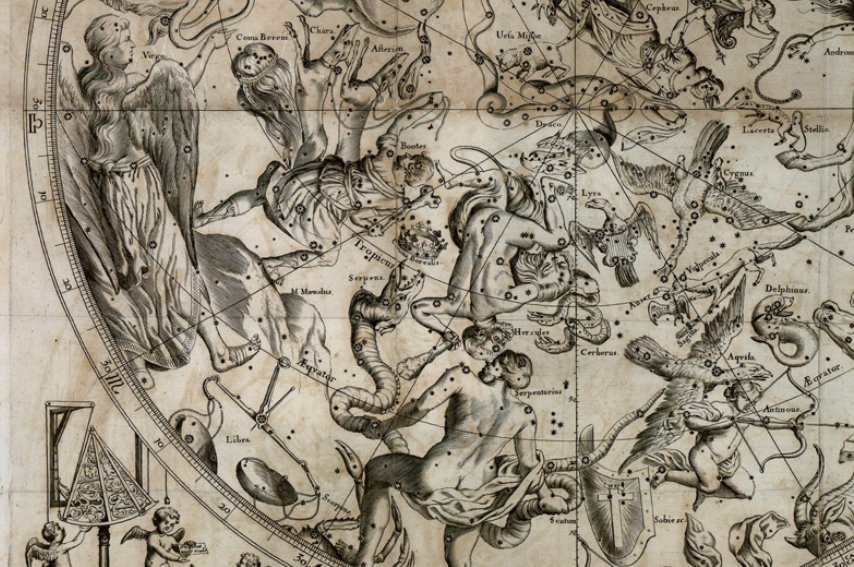
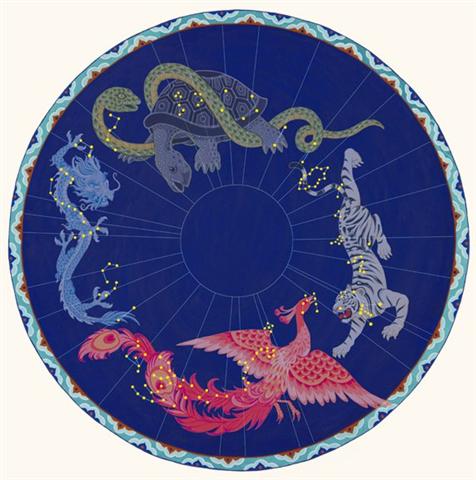
| *APRIL 18
(108) |
19 |
20 |
21 |
22 |
23 |
24 |
 |
 |
 |
 |
 |
 |
 |
|
Ga2-2 (32) |
Ga2-3 |
Ga2-4 |
Ga2-5 |
Ga2-6 |
Ga2-7 |
Ga2-8 |
|
no star listed (96) |
β Monocerotis, ν Gemini
(97.0) |
no star listed (98) |
ν Puppis (99.2), ψ3 Aurigae
(99.4), ψ2 Aurigae (99.5)
GEMMA (α Cor. Bor.)
|
ψ4 Aurigae (100.5),
MEBSUTA (Outstretched)
= ε Gemini (100.7) |
SIRIUS = α Canis Majoris
(101.2), ψ5 Aurigae (101.4), ψ6 Aurigae (101.7) |
τ Puppis (102.2), ψ7 Aurigae
(102.4) |
| June 25 |
(6 * 29Ż = 177) |
27 |
28 |
29 |
30 |
July 1 |
|
KAUS BOREALIS = λ Sagittarii (279.3) |
ν Pavonis
(280.4), κ Cor. Austr. (280.9) |
Abhijit-22 (Victorious)
θ Cor. Austr. (281.0),
VEGA = α Lyrae
(281.8) |
no star
listed (282) |
ζ Pavonis
(283.4), λ Cor. Austr. (283.6), DOUBLE DOUBLE
= ε Lyrae (283.7), ζ Lyrae (283.8) |
South
Dipper-8 (Unicorn)
Φ Sagittarii
(284.0), μ Cor. Austr. (284.6), η
Cor. Austr., θ Pavonis (284.8) |
SHELIAK (Tortoise)
= β Lyrae, ν Lyrae (285.1), ο Draconis (285.5). λ Pavonis (285.7)
ATLAS (27 Tauri)
|
| December
25 |
26 (360) |
27 |
28 |
29 |
30 |
31 |
|
*OCTOBER 8 |
9 |
10 |
11 (*214) |
12 |
13 |
14 |
| *APRIL
25 (115) |
26 (*36) |
27 |
28 |
 |
 |
 |
 |
|
Ga2-9 |
Ga2-10 |
Ga2-11 |
Ga2-12 (42) |
|
Mash-mashu-sha-Risū-9 (Twins of the Shepherd ?)
θ Gemini (103.0),
ψ8 Aurigae (103.2),
ALHENA (Winding)
= γ Gemini (103.8), ψ9 Aurigae (103.9) |
ADARA (Virgins)
= ε Canis Majoris (104.8) |
ω Gemini (105.4),
ALZIRR (Button)
= ξ Gemini (105.7),
MULIPHEIN (Oaths)
= γ Canis Majoris
(105.8), MEKBUDA
(Contracted) = ζ
Gemini (105.9) |
7h (106.5)
no star listed
(106) |
|
July 2 |
(*104 = 8 * 13) |
4
(185) |
5 |
|
║June 28 |
29 (*100) |
SIRIUS |
║July 1 (182) |
| χ Oct.
(286.0), AIN AL RAMI (Archer's Eye) = ν
Sagittarii (286.2), υ Draconis (286.4), δ Lyrae (286.3), κ Pavonis
(286.5), ALYA = θ Serpentis (286.6) |
ξ
Sagittarii (287.1), ω Pavonis (287.3), ε Aquilae, ε Cor. Austr.,
SULAPHAT
(Tortoise) = γ Lyrae (287.4), λ
Lyrae (287.7), ASCELLA = ζ Sagittarii,
BERED = i Aquilae (Ant.) (287.9) |
Al
Na'ām-18 / Uttara Ashadha-21
NUNKI
= σ Sagittarii (288.4), ζ Cor. Austr. (288.5),
MANUBRIUM = ο Sagittarii (288.8), ζ Aquilae (288.9) |
19h
(289.2)
λ Aquilae (Ant.) (289.1), γ Cor.
Austr (289.3), τ Sagittarii (289.4), ι Lyrae (289.5), δ Cor. Austr.
(289.8) |
|
January 1 |
2 |
3 (368) |
4 |
|
░December 28
|
29 |
30 (364) |
31 |
|
*OCTOBER 15 |
16 |
17 (300) |
18
(*221) |
The great fishhook (haka-turou) in Ga2-11, corresponding to the place
of heliacal Sirius at the time of Gregory XIII, could have been intended to
make us recall the curved elephant tusk of Ashadha, the Invincible
One:
 |
182 + 23 |
 |
182 - 27 |
 |
|
Ga2-11 (41) |
Gb1-18 (247) |
Gb6-20 (402 = 247 +
182 - 27) |
|
║June 30 (181) -
heliacal Sirius
ω Gemini (105.4),
ALZIRR
(Button)
= ξ Gemini
(105.7),
MULIPHEIN
(Oaths)
= γ Canis
Majoris (105.8),
MEKBUDA (Contracted)
= ζ Gemini
(105.9) |
'June 30 (181) -
Sirius at Full Moon
υ Cancri (128.1),
Θ CANCRI
(128.2) |
June 30 (181 = 364 +
182 - 365) - heliacal Sirius
ψ5 Aurigae
(101.4), ν Gemini (101.6), ψ6 Aurigae (101.7) |
|
Gregory XIII |
Roman times |
Time of rongorongo |
|
Uttara Ashadha-21
NUNKI
= σ Sagittarii (288.4), ζ Cor. Austr. (288.5),
MANUBRIUM = ο Sagittarii (288.8), ζ
Aquilae (288.9) |
'December 30 (364)
ROTTEN MELON
= ε Delphini,
Φ PAVONIS
(311.2), η Delphini (311.4), ζ Delphini, ρ Pavonis (311.7)
HEAVENLY GATE (ζ
Tauri)
ALNILAK (ζ Orionis)
PHAKT (α Columbae)
|
Φ SAGITTARII
(284.0), μ Cor. Austr. (284.6), η
Cor. Austr.,
Θ PAVONIS
(284.8) |
 |
 |
 |
 |
|
Gb1-18 |
hakaturou |
Ga2-11 |
viri |
Turou
Mgv.: a great sacriledge or blasphemy. Ta.:
turou, a curse, to blaspheme. Churchill.
Viri
1. To wind, to coil, to roll
up; he viri i te hau, to wind, coil a string (to
fasten something). 2. To fall from a height, rolling over,
to hurl down, to fling down. Viriviri, round,
spherical (said of small objects). Viviri te henua,
to feel dizzy (also: mimiro te henua). Vanaga.
To turn in a circle, to clew
up, to groom, to twist, to dive from a height, to roll (kaviri).
Hakaviri, crank, to groom, to turn a wheel, to
revolve, to screw, to beat down; kahu hakaviri,
shroud. Viriga, rolling, danger. Viriviri,
ball, round, oval, bridge, roll, summit, shroud, to twist,
to wheel round, to wallow. Hakaviriviri, to roll, to
round; rima hakaviriviri, stroke of the flat,
fisticuff. P Pau.: viriviri, to brail, to clew up;
koviriviri, twisting. Mgv.: viri, to roll, to
turn, to twist; viviri, to fall to the ground again
and again in a fight. Mq.: vii, to slide, to roll, to
fall and roll. Ta.: viri, to roll up, to clew up.
Viritopa, danger. Mgv.: Viripogi, eyes heavy with
sleep. Mq.: viipoki, swooning, vertigo. Churchill.
Viti: vili, to pick up
fallen fruit or leaves ... In Viti virimbai has the
meaning of putting up a fence (mbai fence); viri
does not appear independently in this use, but it is
undoubtedly homogenetic with Samoan vili, which has a
basic meaning of going around; virikoro then
signifies the ring-fence-that-goes-about, sc. the moon. In
the Maori, aokoro is the cloud-fence ... Churchill 2.
|

... The form of the letter
θ suggests a midline
('waist'), although the origin of θ is the Phoenician tēth
which means 'wheel'. This in turn could have originated from a glyph
named
'good' which in Egypt was
nfr ...
 |
 |
|
maitaki |
Ga8-6 |
|
Maitaki
Clean, neat, pure,
pretty, nice, beautiful, handsome; tagata rima
maitaki, clean-handed man, correct man. Vanaga. 1.
Good. Henua maitaki = the good earth. 2. Shine.
Marama maitaki = the shining moon. Barthel. Ce
qui est bon. Jaussen according to Barthel.
Meitaki, good,
agreeable, efficacious, excellent, elegant, pious,
valid, brilliant, security, to please, to approve (maitaki);
ariga meitaki, handsome, of pleasant mien; mea
meitaki ka rava, to deserve; meitaki ke,
marvelous, better. Hakameitaki, to make good, to
amend, to do good, to bless, to establish.
Meitakihaga, goodness. PS Pau.: maitaki,
good. Mgv.: meitetaki, beautiful, good. Mq.:
meitai, good, agreeable, fit, wise, virtuous. Ta.:
maitaiki, good, well. Niuē:
mitaki, good.
Maitakia,
clean. Churchill. |

|



























